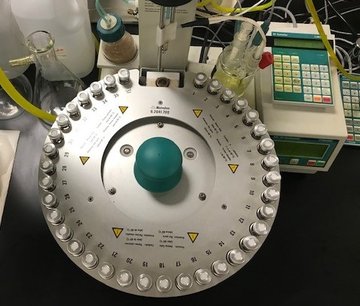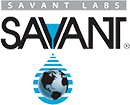Karl Fischer Water Testing - ASTM D6304, Procedure A, B and C
Which procedure should I request?
 ASTM D6304 Method for Determination of Water in Petroleum
Products, Lubricating Oils, and Additives by Coulometric Karl Fischer
Titration has three procedures (all coulometric) for determining water
content. The procedures can be used based on the sample itself, known
interactions, and/or equipment availability. Savant Labs typically run
ASTM D6304 Procedure B (which used to be Procedure C recently updated by
ASTM) and Procedure A. The different procedures are highlighted
below.
ASTM D6304 Method for Determination of Water in Petroleum
Products, Lubricating Oils, and Additives by Coulometric Karl Fischer
Titration has three procedures (all coulometric) for determining water
content. The procedures can be used based on the sample itself, known
interactions, and/or equipment availability. Savant Labs typically run
ASTM D6304 Procedure B (which used to be Procedure C recently updated by
ASTM) and Procedure A. The different procedures are highlighted
below.
The principle of Karl Fischer titration is based on the
oxidation reaction between iodine and sulphur dioxide. Water reacts with
iodine and sulphur dioxide to form sulphur trioxide and hydrogen iodide.
An endpoint is reached when all the water is consumed.
Procedure A - is
recommended only for low viscosity samples without expected
interferences. A representative portion of the test specimen is
injected directly into the titration cell.
Procedure B, Water Oven Accessory— is
recommended for samples that do not readily dissolve in Karl Fischer
reagent (reagent consists of iodine, sulfur dioxide, a base, and a
solvent, such as alcohol), viscous samples, and samples
with components that are expected to interfere with the Karl Fischer
reaction. A representative portion of the sample is placed into a
sealed glass vial and heated in an oven to extract any water present into
the headspace of the vial. The vaporized water in the headspace is
carried into the Karl Fischer titration cell by a dry non-reactive
carrier gas where the water is titrated. Co-solvents may be used to
enhance water extraction from the sample.
Procedure C, Water
Evaporator Accessory— is also recommended
for samples that do not readily dissolve in Karl Fischer
reagent, viscous samples, and samples with components that are
expected to interfere with the Karl Fischer reaction. As in Procedure
B, a representative portion of the test specimen is injected into a
heated solvent or mineral oil in the water vaporizer accessory and the
vaporized water is carried to the Karl Fischer cell by a dry non-reactive
carrier gas where the water is titrated.
Procedures B and C can be used to analyze samples appropriate for
Procedure A. Should you be unsure as to which method to select, our team
of experienced technicians and chemists are here to assist you.
